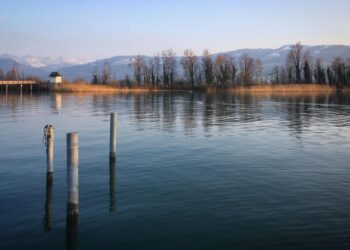In the annals of American history, few figures loom as large as George Washington. Revered as the “Father of His Country,” Washington’s leadership during the Revolutionary War and his role in shaping the young nation’s government are the stuff of legend. Yet, amidst the countless accolades and monuments dedicated to his memory, one question persists: Where is George Washington buried? This seemingly straightforward inquiry belies a fascinating history journey filled with twists, controversies, and enduring mysteries. Join us as we embark on a quest to unveil the final resting place of America’s first president and explore the profound significance of his legacy.
Where is George Washington buried?
George Washington is buried at his beloved Mount Vernon estate in Virginia. Following his death in 1799, Washington was initially interred in a family tomb on the grounds. Later, a permanent tomb, the Washington Family Mausoleum, was constructed at Mount Vernon, where he and other family members rest. The location serves as a poignant reminder of Washington’s enduring legacy and deep connection to the land he called home.
The Life And Legacy Of George Washington
George Washington’s life and legacy are pillars of American history, embodying the ideals of leadership, courage, and service to the nation. Born in 1732 to a prominent Virginia family, Washington’s early years were marked by modest beginnings and a thirst for knowledge. His experiences as a surveyor in the Virginia wilderness provided valuable lessons in resilience and determination, shaping the character of the man who would later become the cornerstone of the American Republic.
George Washington’s pivotal role in founding the United States cannot be overstated. As commander-in-chief of the Continental Army during the Revolutionary War, he led the fledgling nation to victory against the British Empire, defying overwhelming odds and inspiring a generation to fight for liberty and independence. His strategic brilliance, unwavering resolve, and steadfast leadership were instrumental in securing America’s freedom and laying the foundation for a new era of governance.
In 1789, George Washington was unanimously elected as the first President of the United States, a position he reluctantly accepted out of a sense of duty to his country. As president, Washington faced formidable challenges, from establishing a functional government to navigating foreign relations and domestic disputes. Yet, through his visionary leadership and commitment to unity, he set crucial precedents for the presidency and guided the nation through its formative years with wisdom and integrity.
Washington’s contributions to the shaping of American democracy are immeasurable. From presiding over the Constitutional Convention to advocating for the ratification of the Constitution, he played a central role in crafting the framework of the U.S. government. His emphasis on the principles of liberty, justice, and the rule of law laid the groundwork for a system of governance that would endure the test of time and serve as a beacon of hope for future generations.
Beyond his political achievements, George Washington’s legacy is defined by his exemplary character and moral fortitude. Revered as a man of integrity, he embodied the virtues of honesty, humility, and selflessness, setting a standard of leadership that continues to inspire leaders around the world. His commitment to public service and his willingness to sacrifice personal gain for the greater good exemplify the essence of true statesmanship and remain etched in the annals of history.
The Shift In Burial Location
Following George Washington’s death in 1799, his final resting place became a matter of significant debate and consideration. Initially, Washington was interred in a family tomb on the grounds of his Mount Vernon estate in Virginia, where he had spent most of his life. However, as the nation mourned the loss of its revered leader, discussions arose regarding the most fitting location for his permanent burial site.
The Washington Family Vault: After his passing, George Washington’s remains were placed in a temporary tomb on the grounds of Mount Vernon. This initial resting place was a temporary solution, while plans were made for a more permanent burial location. The vault, located near the Mount Vernon mansion, became a pilgrimage site for those wishing to pay their respects to the fallen hero.
The Congressional Tomb Proposal: In the years following Washington’s death, there was a proposal to relocate his remains to a tomb beneath the U.S. Capitol building in Washington, D.C., Proponents of this plan argued that such a location would be a fitting tribute to Washington’s role as the nation’s first president and a symbol of the unity of the newly formed United States. However, this proposal was opposed by those who believed that Washington’s wishes to be buried at Mount Vernon should be respected.
Reevaluation and Decision: Ultimately, after much deliberation, it was decided that George Washington’s remains would remain at Mount Vernon, by his wishes and those of his family. In 1831, a new tomb, the Washington Family Mausoleum, was constructed on the estate to serve as the final resting place for Washington and several family members. This decision ensured that Mount Vernon would forever be associated with the memory of its most famous resident and allowed visitors worldwide to pay their respects at his gravesite.
Washington’s Death: The nation’s mourning And The Events Following His Passing
The death of George Washington on December 14, 1799, sent shockwaves throughout the fledgling United States, prompting an outpouring of grief and mourning across the nation. As news of his passing spread, communities from New England to the Southern states united in solemn tribute to the man who had led them to victory in the Revolutionary War and guided the young republic through its formative years.
A Nation in Mourning:
The news of Washington’s death was met with widespread sorrow and disbelief. Across the country, church bells tolled, flags were lowered to half-mast, and public gatherings were held to honor his memory. Citizens mourned the loss of their beloved leader, recognizing his profound impact on their lives and the future of their nation.
Tributes and Eulogies:
In the days following Washington’s death, tributes and eulogies poured forth from all corners of the country. Political leaders, military commanders, and ordinary citizens paid homage to his legacy, praising his wisdom, integrity, and unwavering commitment to the cause of liberty. Eulogies delivered in Congress and at memorial services throughout the nation underscored the depth of Washington’s impact on the American psyche and his enduring place in the people’s hearts.
Funeral Arrangements:
Plans for Washington’s funeral were quickly set in motion, with preparations for a solemn and dignified ceremony befitting his stature as the nation’s first president. A funeral procession, attended by dignitaries and mourners from near and far, accompanied Washington’s remains from Mount Vernon to the family vault, where he would be temporarily interred pending the construction of a permanent tomb.
Legacy of Leadership:
In the wake of Washington’s death, the nation grappled with the daunting task of carrying on without its revered leader. Yet, even in death, Washington’s influence remained palpable, serving as a guiding light for future generations of Americans. His legacy of leadership, patriotism, and selfless service inspired the young republic as it navigated the challenges of nation-building and self-governance.
Conclusion
The death of George Washington in 1799 left a profound impact on the young United States, prompting a nationwide outpouring of grief and tribute. As the nation mourned its revered leader, it also reaffirmed its commitment to the ideals of liberty, unity, and self-governance that Washington had championed throughout his life. His legacy of leadership, integrity, and service inspires Americans today as a timeless reminder of the enduring power of visionary leadership and the pursuit of a more perfect union.
FAQ’s
Is there a fee to visit George Washington’s tomb at Mount Vernon?
There is an admission fee to visit Mount Vernon, which includes access to George Washington’s tomb, the mansion, and other historic sites. However, admission may be free for certain groups, such as active-duty military personnel and children under a certain age.
Are any special events or ceremonies held at George Washington’s tomb?
Mount Vernon often hosts special events and ceremonies to honor George Washington’s legacy, including wreath-laying ceremonies and commemorative programs on significant anniversaries.
Is George Washington’s tomb open to the public year-round?
George Washington’s tomb at Mount Vernon is open to the public year-round, with visiting hours varying depending on the season. It is advisable to check the Mount Vernon website for the most up-to-date information on visiting hours and any special closures.







